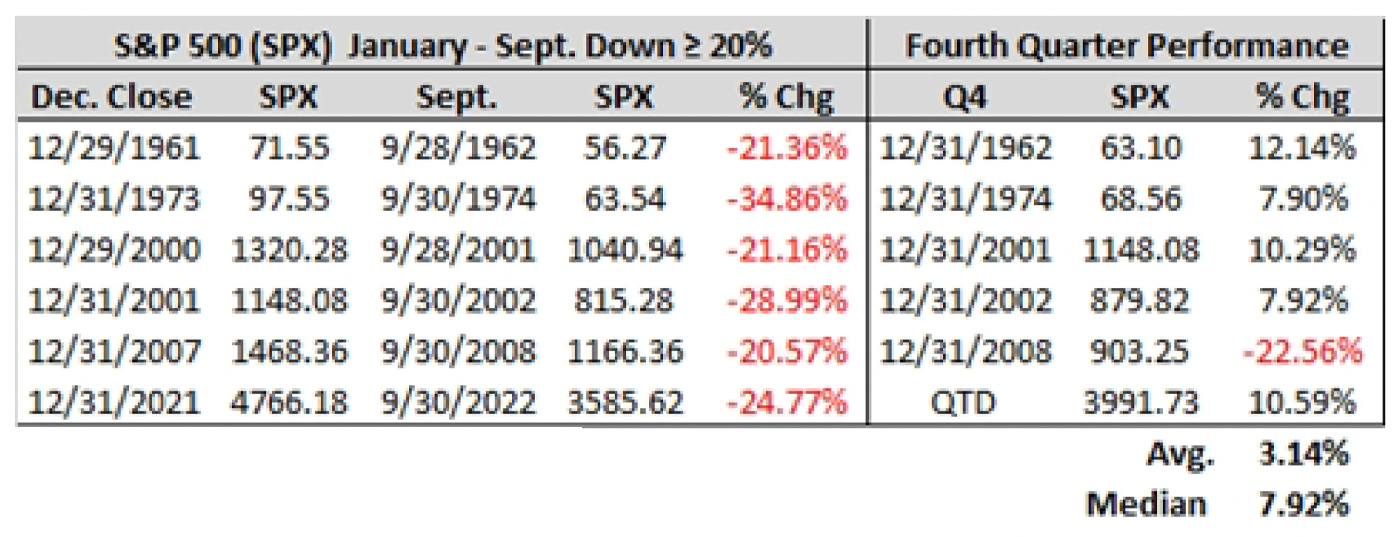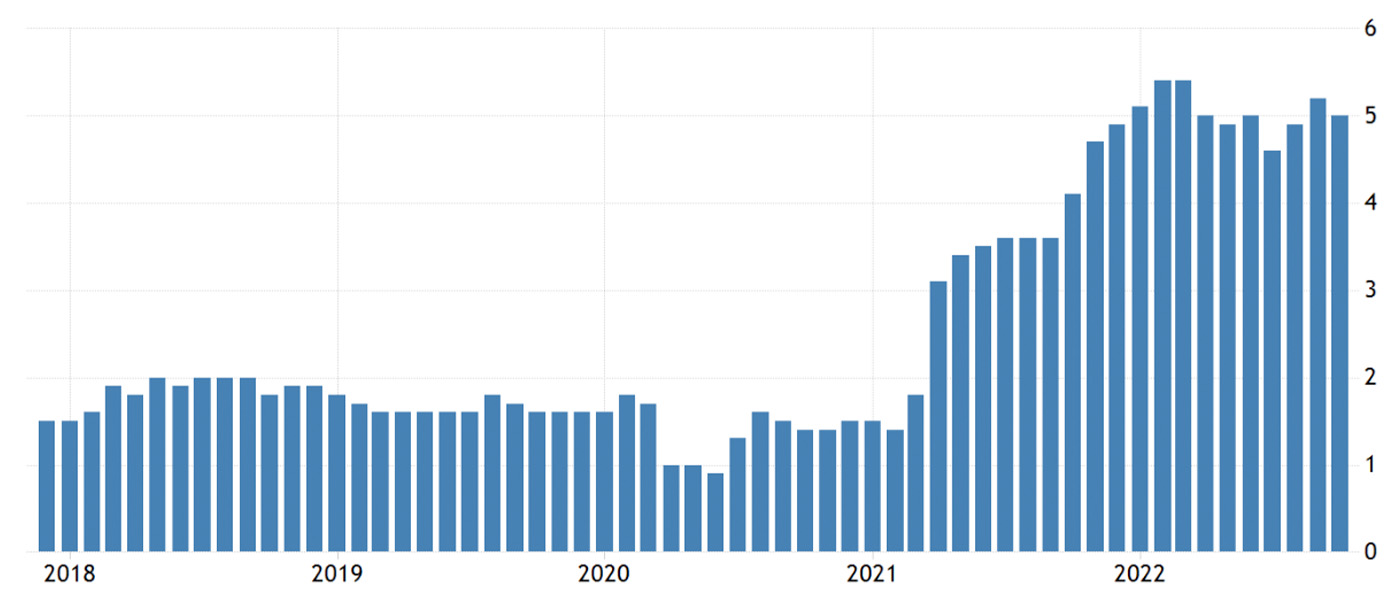

Last week, a less-hawkish-than-expected tone from Federal Reserve Chair Powell sent the S&P 500 (SPX) just beyond our expected fourth-quarter upside range.
History shows any comparable year with such a weak start through the first three quarters leads to a fourth-quarter rally with an end-of-quarter gain between 8%–12% (Table 1). Only 2008 saw a negative Q4 after a similar weak start. The SPX closed the week ending Nov. 18 in the middle of that expected outcome range, suggesting that there was no significant tactical edge into year-end. Our near-term game plan is to fade a meaningful Q4 move above a 12% gain.
TABLE 1: Q4 RALLIES IN YEARS WITH >20% DROPS THROUGH SEPTEMBER
Sources: Bloomberg, Canaccord Genuity
In his speech on Nov. 30, Powell outlined what conditions need to be in place to bring the core personal consumption expenditure index (PCE) down to the Fed’s desired 2% level:
- Restrictive monetary policy—higher for longer. Ultimately, rates need to be higher than thought in September, and they may need to stay there for “some time.” Historically, the Fed has found coming up with the right level of rates that achieves its dual mandate of stable prices and full employment very challenging.
- Slowing demand growth. Powell suggested the Fed may need to create below-trend growth for a longer period in order to bring inflation down to its desired level. The Fed continues to lift rates into a generationally levered system with spiking inventories and slowing demand.
- Further reduction in the three types of inflation:
- Core-goods inflation (ex. housing). This has already been apparent in the drop this fall in durable and nondurable goods inflation, with the generational ramp higher abating.
- Housing-services inflation, including rents and leases. We expect this to start declining next year.
- Core-services inflation (ex. housing). This is most important because it is more than half of core PCE.
Summary
The different components of PCE inflation highlight the Fed’s challenge of managing lower inflation while avoiding recession. The post-pandemic inflation spike started with goods while we were largely locked down and has since migrated to services as the economy reopened—with inflation in services still picking up.
The year-end rally we discussed coming into this quarter likely reflects the “temporary sweet spot” because the impact of initial Fed tightening has helped to bring down goods inflation—which should be enough to keep core PCE below peak. Yet the rise in services holds core PCE well above the desired 2% target. The Fed’s challenge going forward is to continue raising rates to 5% and to keep them there for an extended period while reducing the balance sheet—and to avoid creating a recession in a levered system.
FIGURE 1: UNITED STATES CORE PCE PRICE INDEX ANNUAL CHANGE
Sources: Trading Economics, U.S. Bureau of Economic Analysis
The opinions expressed in this article are those of the author and do not necessarily represent the views of Proactive Advisor Magazine. These opinions are presented for educational purposes only.
New this week:
 Tony Dwyer is the head of the U.S. Macro Group and chief market strategist at Canaccord Genuity. He also sits on the firm’s U.S. operating committee. Mr. Dwyer joined Canaccord Genuity in 2012 and is known for the practical application of macroeconomic and tactical market indicators. Mr. Dwyer was previously equity strategist and director of research at Collins Stewart and a member of the firm's executive committee. Mr. Dwyer is a frequent guest on many financial news networks. canaccordgenuity.com
Tony Dwyer is the head of the U.S. Macro Group and chief market strategist at Canaccord Genuity. He also sits on the firm’s U.S. operating committee. Mr. Dwyer joined Canaccord Genuity in 2012 and is known for the practical application of macroeconomic and tactical market indicators. Mr. Dwyer was previously equity strategist and director of research at Collins Stewart and a member of the firm's executive committee. Mr. Dwyer is a frequent guest on many financial news networks. canaccordgenuity.com


